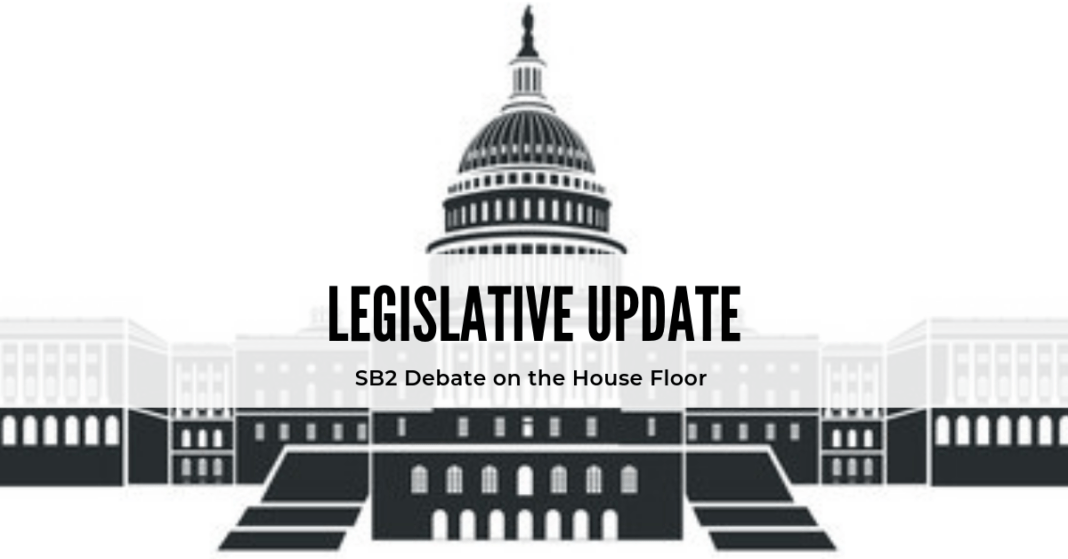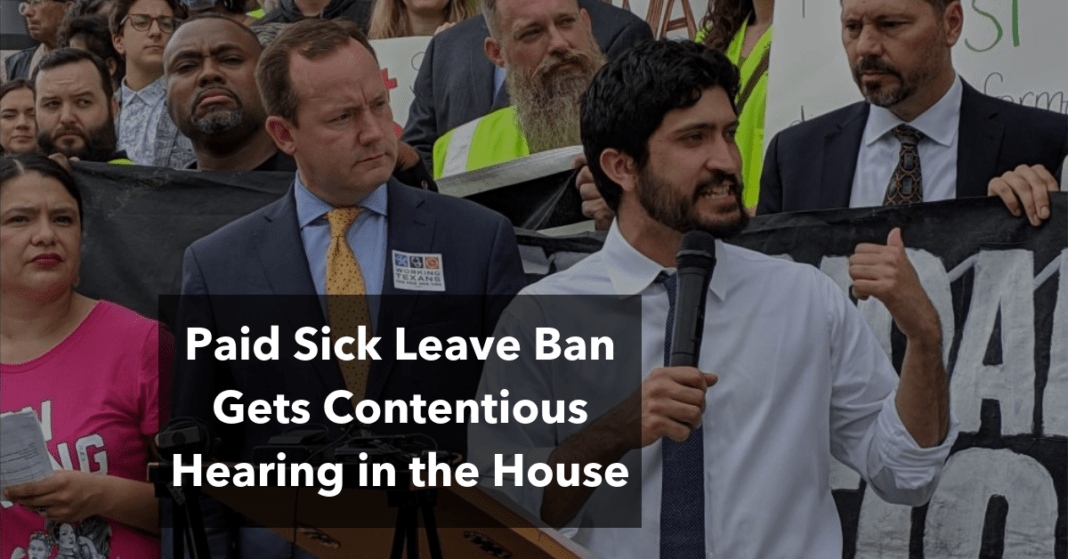Behind closed doors at the Texas Capitol, a panel of House and Senate budget writers is negotiating which public programs will receive state funding over the next two years. Both chambers approved separate spending plans in recent weeks. But before the regular legislative session ends May 27, they must work out key differences on how to spend the state’s anticipated surplus. Including public schools, teacher salaries, women’s health, prison guard pay and more, we’ve laid out some of the biggest spending priorities where lawmakers must find compromise before sending a final version to Gov. Greg Abbott for approval. These figures come from the Legislative Budget Board.
While Hurricane Harvey recovery funds for school districts and future disaster preparedness are big-ticket spending items this session, they are not included in this analysis because they are mostly included in a “supplemental” budget that pays for leftover expenses from the 2017 legislative session.
Total 2020-21 budget
| HOUSE | SENATE |
|---|---|
| $251 billion | $248 billion |
| Includes a $2.3 billion withdrawal from the state savings account | Doesn’t include any money from the state savings account |
Both budgets remain under a constitutional spending limit, with the House spending about $3 billion more than the Senate. The House budget would spend about $2.3 billion from the Economic Stabilization Fund, the state’s savings account fed by oil and gas tax collections.
School funds and teacher pay
| HOUSE | SENATE |
|---|---|
| $6.3 billion | $6.3 billion |
| To increase base funding for each student by $890 and pay for a roughly $1,300 minimum raise for all school employees | To increase base funding for each student by $740 and pay for a $5,000 raise for teachers and librarians |
The House and Senate have agreed to spend a total of $9 billion in new state funds on the public education portion of the budget, but a sticking point between the chambers is how much money should be set aside for across-the-board teacher pay raises. The Senate favors a larger mandatory raise, while the House wants school districts to have more flexibility.
The Senate would spend about $4 billion on mandatory teacher and librarian salary increases; the House would spend about $1.65 billion for staff salary increases, with school districts required to make across-the-board pay raises and offer additional targeted pay raises for certain staff. The chambers also disagree about other ways to spend on public education. For example, the Senate favors spending on merit pay for teachers and outcomes-based funding for schools, while the House stripped those provisions from its plan.
Property tax cuts
| HOUSE | SENATE |
|---|---|
| $2.7 billion | $2.7 billion |
| 4-cent property tax rate cut | Up to a 15-cent property tax rate cut, but only if lawmakers and voters agree to raise sales taxes |
The House has offered $2.7 billion to cut homeowners’ and business owners’ property tax bills by 4 cents per $100 valuation and to further reduce tax rates in some school districts with higher tax levies.
The Senate is considering a more expensive, long-term property tax reduction plan — contingent on a sales tax hike that lawmakers and voters must approve to fund property tax cuts after the first year. The Senate would spend $2.7 billion, plus the new revenues yielded from higher sales taxes, to reduce school district taxes by 8 cents per $100 valuation in the first year and 15 cents total in the year after. The Senate would also expand an exemption homeowners are entitled to receive on the value of their homes for school district taxes from $25,000 to $40,000.
House leaders, including Speaker Dennis Bonnen and Public Education Committee Chairman Dan Huberty, have also endorsed a sales tax hike to fund property tax cuts. The House floated a proposal that would have spent 80% of the funds on reducing school district tax rates and the remaining 20% on base funding for students, but a House panel nixed that idea late Wednesday over objections from Democrats.
Medicaid
| HOUSE | SENATE |
|---|---|
| $68.6 billion | $67 billion |
| Pays for new projected patients | Pays for new projected patients, requires cost cuts |
The Senate includes essentially a $900 million cut to the federal-state health insurance program for the poor and disabled, found in a “cost-containment” directive. Neither chamber fully funds the expected growth in Medicaid costs, meaning lawmakers will almost certainly have to pay for leftover bills in a supplemental budget when they reconvene in 2021.
Mental and behavioral health
| HOUSE | SENATE |
|---|---|
| $5 billion | $4.1 billion |
| For programs outside of Medicaid and the Children’s Health Insurance Program | For programs outside of Medicaid and the Children’s Health Insurance Program |
A major difference is that the House budget includes more funding for state mental hospitals, including for construction and deferred maintenance projects.
Early childhood intervention
| HOUSE | SENATE |
|---|---|
| $373 million | $313 million |
| Fully funds the health agency’s request | Partially funds the health agency’s request |
The Senate budget would not provide enough funds to keep up with enrollment or cost growth in the state’s Early Childhood Intervention program, whereas the House budget fully funds the agency’s request. Early Childhood Intervention services are available to Texas children younger than 3 years old with developmental delays or disabilities.
Judicial salaries
| HOUSE | SENATE |
|---|---|
| $244 million | $222 million |
| Includes a 10% salary increase, dependent on a reform bill passing | Does not include a salary increase |
The House would boost most judges’ salaries by about 10%, while the Senate would keep salaries flat.
Prison guard and parole officer pay raises
| HOUSE | SENATE |
|---|---|
| $168 million | $86 million |
| Would provide a 10% salary increase for prison guards and some parole officers | Would provide a 5% salary increase for prison guards and parole officers |
Most prison guards and parole officers would receive pay raises under the House and Senate plans. The House would give 10% pay raises to correctional officers and parole supervision officers and a 2.8% pay raise for parole hearing and institutional parole officers. The Senate would pay for an across-the-board 5% raise.
Community attendant pay
| HOUSE | SENATE |
|---|---|
| $87 million | $23 million |
| For a raise to attendants’ base wages | For an “enhancement” program to improve pay for some attendants based on longevity |
Neither chamber comes near the $389 million requested by the Texas Health and Human Services Commission and Gov. Greg Abbott to provide a 50-cent increase to the base wage for community attendants who care for the elderly and people with disabilities.
Adult Protective Services pay raises
| HOUSE | SENATE |
|---|---|
| $19 million | $4.1 million |
| For salary increases and retention bonuses for some workers | For salary increases |
Both chambers provide funding to improve staff retention and raise employee salaries, with the House offering about $15 million more.
Editor’s note: This story has been updated to note that a House panel on Wednesday nixed an idea to direct some money from a proposed sales tax hike toward base funding for students.
This story originally appeared on the Texas Tribune. To read this article in its original format, click here.![]()







